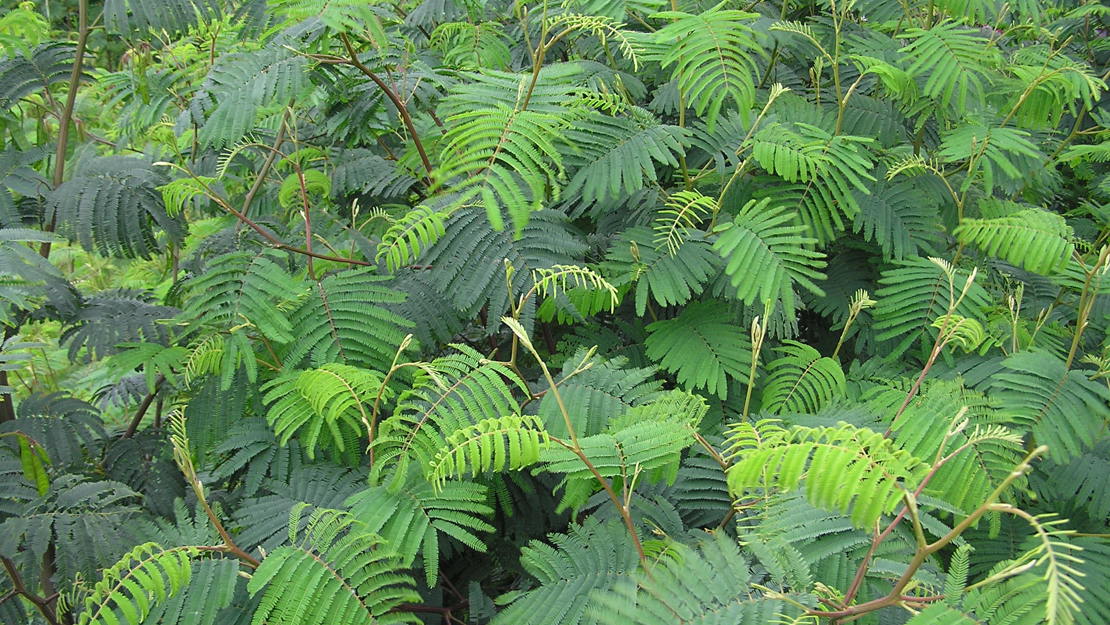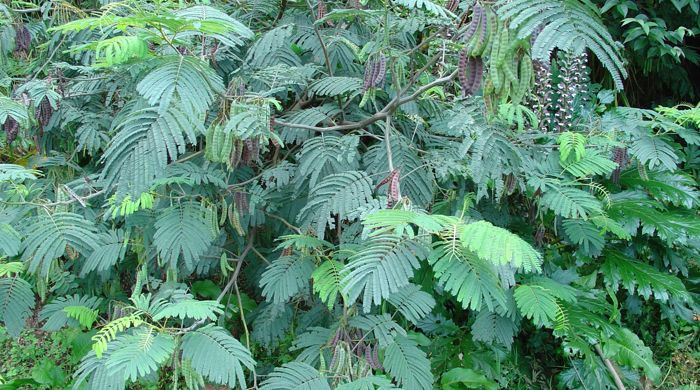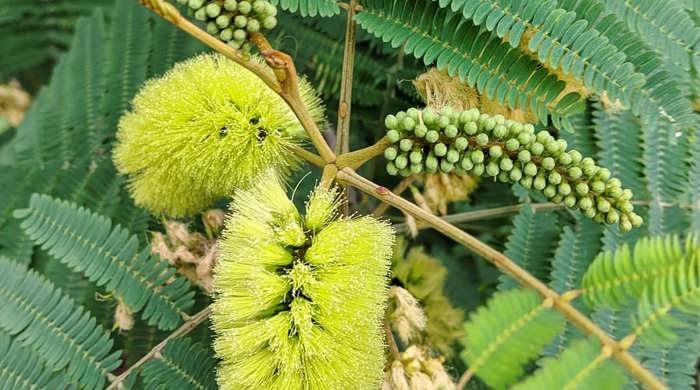Paraserianthes lophantha
Brush wattle
Family: Fabaceae
Origin: West Australia

Regional Pest Management Plan (RPMP) status
- Parkland with Significant Ecological Areas — Site-led (on-park only)
- Waitākere Ranges Heritage Area priority status
- Whole region — Sustained control
- Hauraki Gulf Controlled Area Notice pest
General description
Shrub to small tree. Leaves bi-pinnate. Flowers are green-yellow and borne in cylindrical inflorescences May – August. Seed pods are < 150 x 18 cm and contain black seeds.
What you need to know
To help protect our environment:
- You must not breed, distribute, release or sell brush wattle within the Auckland region.
- You must not plant brush wattle within the Auckland region, unless you are transferring an existing plant on your land to another location within the boundaries of the same property.
- You must destroy any brush wattle on land that you occupy if it has been planted in breach of the above rules and you are directed to do so by an authorised person.
Habitats
Open and disturbed sites, roadsides, riparian and wetland margins, sand dunes, coastal habitats, scrub, open forest.
Dispersal
Seeds dispersed by water. Vegetative spread from suckering.
Impact on environment
Outcompetes native plants. Nitrogen fixer. May facilitate establishment of pest plants.
Control
Site Management
Follow up treated areas 3 times per year. Encourage natural regeneration of native plants or replant treated areas where possible after 2-3 treatments to establish dense ground cover and minimise reinvasion.
Recommended approaches
Physical control
Method: Dig out.
Plant parts requiring disposal: Seeds.
Disposal options: Trees can be chipped and used as mulch, preferably when not in seed.
Biocontrol
Biocontrol is currently not available for this species.
Community agrichemical control recommendations
No qualifications: Cut stump and paste freshly cut base of stems with double strength glyphosate gel or ringbark and paste cut with double strength glyphosate gel.
Basic Growsafe certified: Foliar spray seedlings with 200ml glyphosate green per 10L of water. Ringbark and spray cut with 750ml glyphosate green per 1 L of water.
Certified Handler/Experienced agrichemical user: Drill and inject trees with 750ml glyphosate green and 10ml penetrant per 1L of water, if safe to do so. Drill 18mm holes (tangentially angled downwards) in a spiral up the trunk.
For 50mm stems drill one hole. For 100mm stems drill two holes. For larger stems drill holes 150mm apart. Foliar spray seedlings with 200ml glyphosate green per 10L of water and 20ml penetrant.
Safety notes
Large trees must not be drilled or ringbarked that are closer than 1.5 times the height of the tree from paths, walkways and property.
Trees over 4 metres in height should be removed by a qualified arborist.
Caution: When using any herbicide or pesticide please read the label thoroughly to ensure that all instructions and safety requirements are followed.





